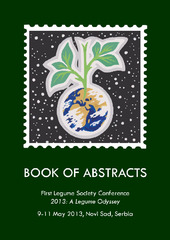Приказ основних података о документу
Beauty will save the world, but will the world save beauty? The case of highly endangered Vavilovia formosa (Stev.) Fed.
| dc.creator | Mikić, Aleksandar | |
| dc.creator | Smykal, Petr | |
| dc.creator | Kenicer, Gregory | |
| dc.creator | Vishnyakova, Margarita | |
| dc.creator | Sarukhanyan, Nune | |
| dc.creator | Akopian, Janna | |
| dc.creator | Vanyan, Armen | |
| dc.creator | Gabrielyan, Ivan | |
| dc.creator | Smykalova, Iva | |
| dc.creator | Sherbakova, Ekaterina | |
| dc.creator | Zorić, Lana | |
| dc.creator | Atlagić, Jovanka | |
| dc.creator | Zeremski-Škorić, Tijana | |
| dc.creator | Ćupina, Branko | |
| dc.creator | Krstić, Đorđe | |
| dc.creator | Jajić, Igor | |
| dc.creator | Antanasović, Svetlana | |
| dc.creator | Đorđević, Vuk | |
| dc.creator | Mihailović, Vojislav | |
| dc.creator | Ivanov, Alexandr | |
| dc.creator | Ochatt, Sergio | |
| dc.creator | Ambrose, Mike | |
| dc.date.accessioned | 2022-08-09T08:24:11Z | |
| dc.date.available | 2022-08-09T08:24:11Z | |
| dc.date.issued | 2013 | |
| dc.identifier.isbn | 978-86-80417-44-8 | |
| dc.identifier.uri | http://fiver.ifvcns.rs/handle/123456789/2988 | |
| dc.description.abstract | Vavilovia formosa (Stev.) Fed. is a relict, endangered species from the highlands of Caucasus and Near East. It was described in 1812, with often uncertain status and finally recognised as a separate genus of the tribe Fabeae Rchb. Our informal international group was established in 2007 to revive the interest in this species since it had been seriously neglected for decades. This review gives an overview of the accumulated knowledge on V. formosa and presents the results of its most recent multidisciplinary research. Three expeditions were made to two locations in Armenia in 2009, providing the material for anatomical, morphological, chemical and molecular analysis. Unlike previous attempts, ex situ conservation in Yerevan and in vitro propagation, important for potential interspecies hybridisation, are successful. Molecular tools were used to clarify the taxonomical position of V. formosa, often considered the closest to the extinct ancestor of the whole tribe. The analysis of four informative regions of chloroplast and nuclear DNA showed that V. formosa belonged to the same clade with Lathyrus and Pisum and with a distinct status. Preservation and maintenance of V. formosa remains the only basis for further development of all other scientific aspects, especially breeding and uses in agronomy. | sr |
| dc.language.iso | en | sr |
| dc.publisher | International Legume Society | sr |
| dc.publisher | Novi Sad : Institute of Field and Vegetable Crops | sr |
| dc.relation | info:eu-repo/grantAgreement/MESTD/Technological Development (TD or TR)/31024/RS// | sr |
| dc.relation | "Sustainable preservation of indigenous South East European legumes and their traditional food and feed products", (SEELEGUMES) within the EU SEE-ERA.PLUS Net programme, 2010-2011 | sr |
| dc.rights | openAccess | sr |
| dc.rights.uri | https://creativecommons.org/licenses/by/4.0/ | |
| dc.source | Book of Abstracts, 1st Legume Society Conference 2013: A Legume Odyssey, 9-11 May 2013, Novi Sad | sr |
| dc.subject | Vavilovia formosa | sr |
| dc.subject | Vavilovia | sr |
| dc.subject | endangered species | sr |
| dc.subject | endangered plants | sr |
| dc.subject | expeditions | sr |
| dc.subject | preservation | sr |
| dc.subject | ex situ conservation | sr |
| dc.subject | in vitro propagation | sr |
| dc.title | Beauty will save the world, but will the world save beauty? The case of highly endangered Vavilovia formosa (Stev.) Fed. | sr |
| dc.type | conferenceObject | sr |
| dc.rights.license | BY | sr |
| dc.citation.epage | 33 | |
| dc.citation.spage | 33 | |
| dc.identifier.fulltext | http://fiver.ifvcns.rs/bitstream/id/8353/34.pdf | |
| dc.identifier.rcub | https://hdl.handle.net/21.15107/rcub_fiver_2988 | |
| dc.type.version | publishedVersion | sr |


